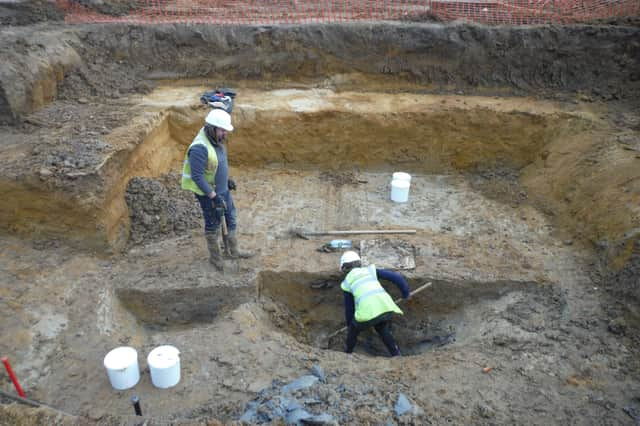The remarkable and historically significant discovery was made during archaeological excavations carried out ahead of a new housing development in Fenstanton, between Cambridge and Huntingdon.
Archaeologists investigating a previously unknown Roman roadside settlement, which includes five small cemeteries, discovered in one grave the remains of a man with a nail through his heel.
The exciting discovery follows on from previous digs across Cambridgeshire in recent years which have uncovered preserved Bronze Age buildings and artefacts at Must Farm in Whittlesey, pristine prehistoric occupation sites and burial monuments in Needingworth Quarry, and new Iron Age, Roman and Anglo-Saxon settlements that emerged during the course of the recent A14 road improvement scheme. Osteologist (human bone specialist) Corinne Duhig from Wolfson College, Cambridge, said: “The lucky combination of good preservation and the nail being left in the bone has allowed me to examine this almost unique example when so many thousands have been lost.
“This shows that the inhabitants of even this small settlement at the edge of empire could not avoid Rome’s most barbaric punishment.”
Inside the cemeteries, 40 adults and five children were buried, with a specialist study showing that some family groups were present. The Roman graves, now fully excavated, also included a number of archaeologically significant artefacts.
The results of the excavation will be formally published when analysis of the site’s finds and evidence has been completed.
Only one previous example of crucifixion has been found worldwide, in Israel, although two possible instances have also been claimed in Italy and Egypt. However, the Fenstanton example is the best preserved.
The exciting discovery follows on from previous digs across Cambridgeshire in recent years which have uncovered preserved Bronze Age buildings and artefacts at Must Farm in Whittlesey, pristine prehistoric occupation sites and burial monuments in Needingworth Quarry, and new Iron Age, Roman and Anglo-Saxon settlements that emerged during the course of the recent A14 road improvement scheme.
The grave of the man who was crucified was discovered during excavations in advance of a new housing development by Tilia Homes (previously known as Kier Living) south of Cambridge Road. The excavation was led by David Ingham of Albion Archaeology.
Speaking for Cambridgeshire County Council’s Historic Environment Team, archaeologist Kasia Gdaniec said: “These cemeteries and the settlement that developed along the Roman road at Fenstanton are breaking new ground in archaeological research.
“Burial practices are many and varied in the Roman period and evidence of ante-or post-mortem mutilation is occasionally seen, but never crucifixion.
“We look forward to finding out more when the results are published. Hopefully, there will be a museum exhibit to showcase the remains soon, and we are working to arrange this. We are grateful to the developer for funding these important investigations as part of their planning obligation.”
Chair of the council’s environment & green investment committee Cllr Lorna Dupré said: “This is yet another remarkable discovery in Cambridgeshire, proving once again what a rich history we have to share and helping to give the county international attention.
“I can’t wait to find out what the final results of the excavation will show, and we will look to find a permanent home for them so they can be put on display and inspire people for generations to come.
“I would like to thank all involved in finding these artefacts and helping to preserve them.”
The exciting discovery follows on from previous digs across Cambridgeshire in recent years which have uncovered preserved Bronze Age buildings and artefacts at Must Farm in Whittlesey, pristine prehistoric occupation sites and burial monuments in Needingworth Quarry, and new Iron Age, Roman and Anglo-Saxon settlements that emerged during the course of the recent A14 road improvement scheme. Osteologist (human bone specialist) Corinne Duhig from Wolfson College, Cambridge, said: “The lucky combination of good preservation and the nail being left in the bone has allowed me to examine this almost unique example when so many thousands have been lost.
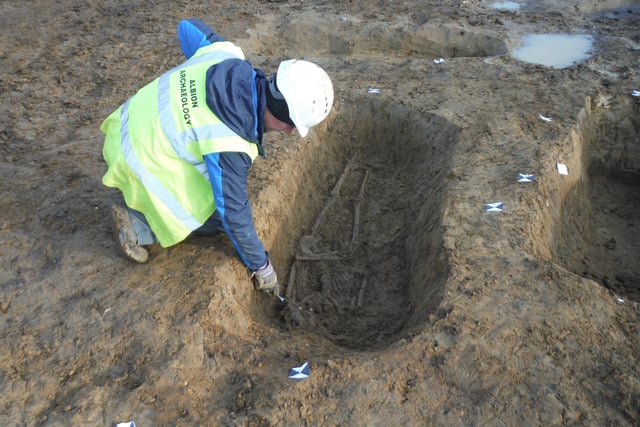
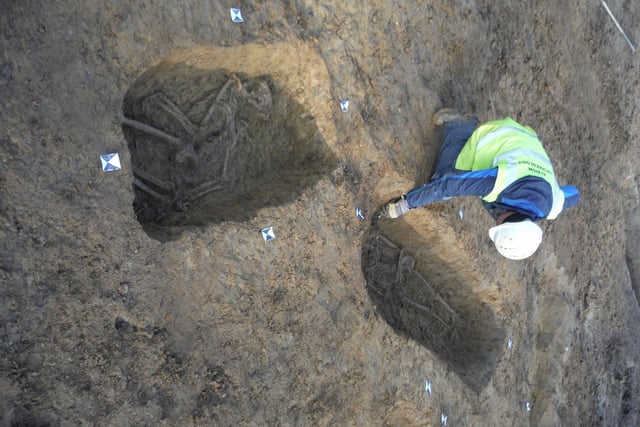
6.
Grave of crucified skeleton in background. Picture: -Albion Archaeology Photo: Midlands
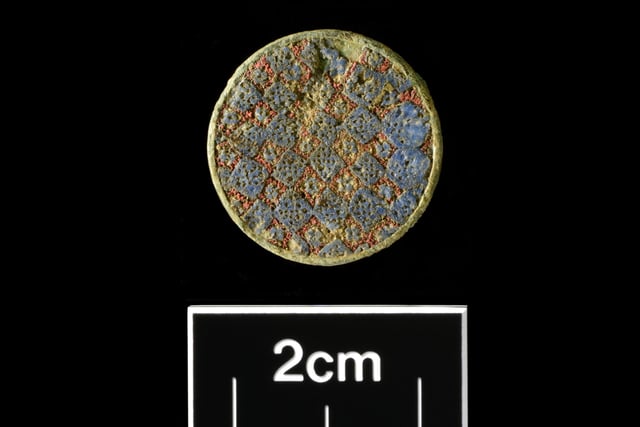
7.
Roman enamelled copper-alloy plate brooch#1 Picture: Albion Archaeology & Adam Williams Photo: Midlands
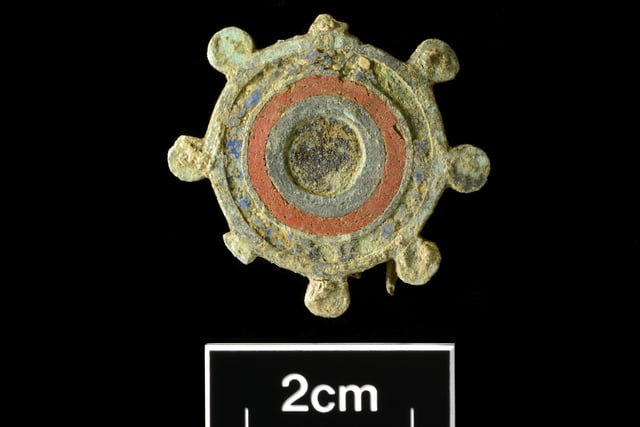
8.
Roman enamelled copper-alloy plate brooch#2 Picture: Albion Archaeology & Adam Williams Photo: Midlands
